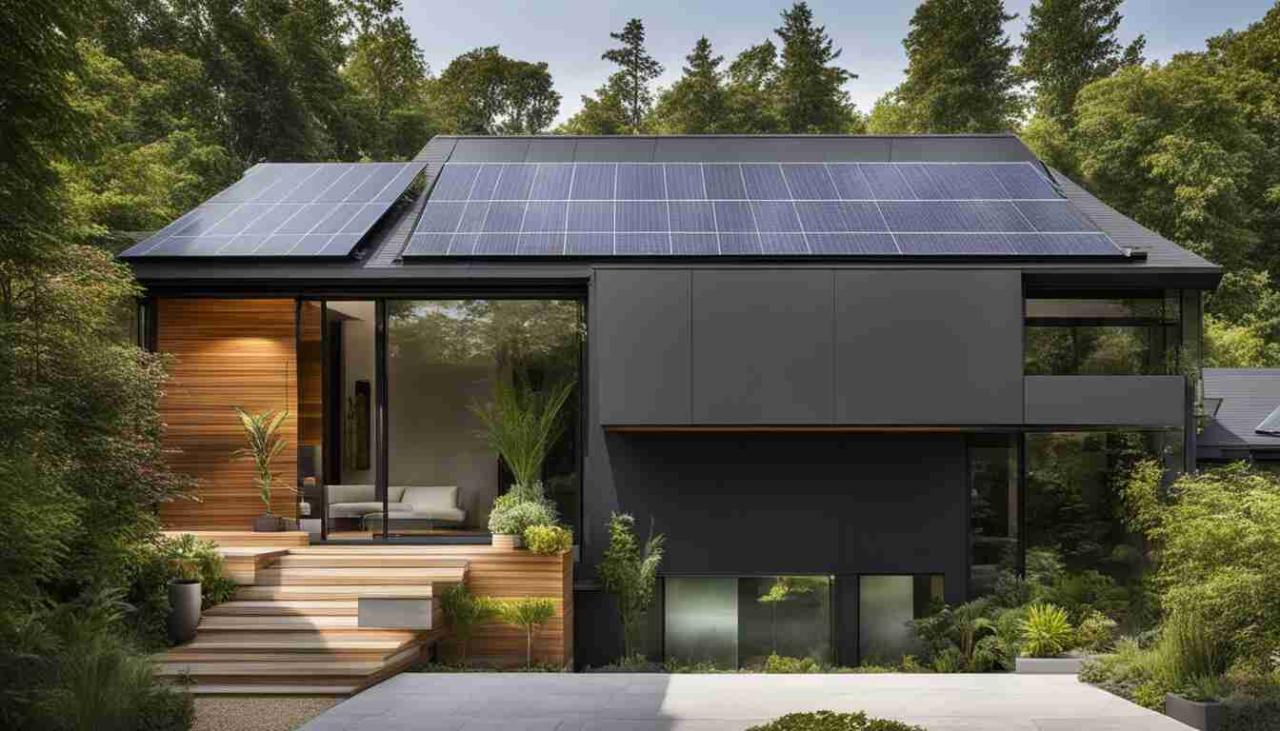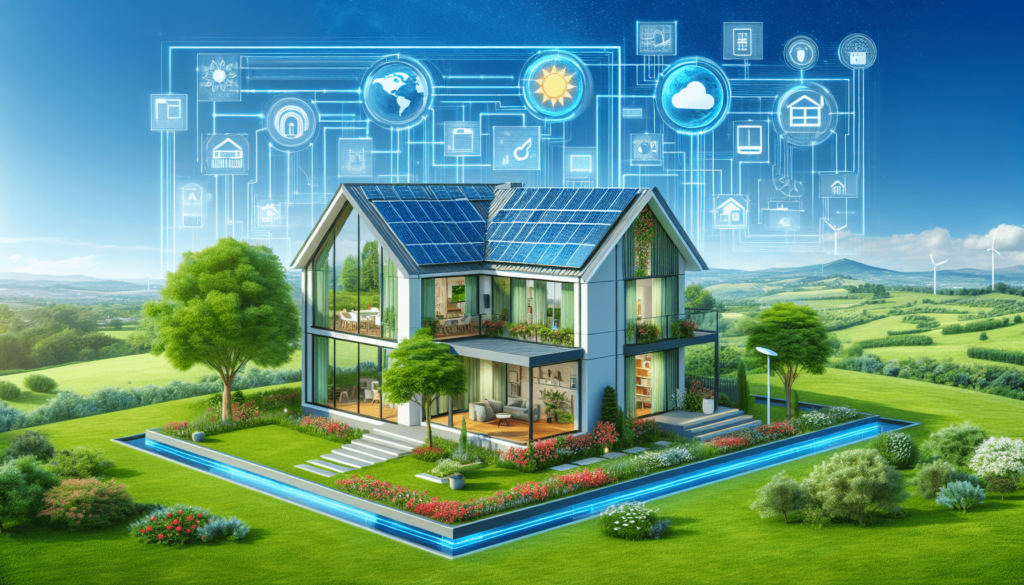Sustainable Living
How Smart Home Exteriors Support Sustainable Living

Exploring the significance of smart home exteriors in promoting sustainable living, this article delves into the various ways technology can enhance environmental consciousness and efficiency within our homes. From energy-efficient design elements to water conservation strategies, smart home exteriors play a crucial role in creating eco-friendly living spaces.
Importance of Smart Home Exteriors for Sustainable Living

Smart home exteriors play a crucial role in promoting sustainable living by incorporating innovative technologies and eco-friendly features. These exteriors not only enhance the overall efficiency of a home but also contribute to reducing environmental impact in various ways.
Integration of Sustainable Features
Smart home exteriors can include features such as solar panels, rainwater harvesting systems, energy-efficient windows, and green roofs. These elements help in reducing energy consumption, water usage, and overall carbon footprint of a household. By integrating such sustainable features, homeowners can actively contribute to environmental conservation and preservation.
Environmental Benefits of Smart Technologies
The incorporation of smart technologies in home exteriors, such as automated irrigation systems, LED lighting, and smart thermostats, can significantly improve energy efficiency and reduce waste. These technologies enable precise control and monitoring of resources, leading to lower energy bills and decreased environmental impact.
Additionally, smart technologies promote a more sustainable lifestyle by encouraging responsible resource management and conservation.
Role of Smart Landscaping
Smart landscaping practices, such as xeriscaping, native plant cultivation, and eco-friendly irrigation systems, play a vital role in promoting sustainability within home exteriors. By adopting these landscaping techniques, homeowners can reduce water usage, minimize chemical inputs, and create a more environmentally friendly outdoor space.
Smart landscaping not only enhances the aesthetic appeal of a property but also contributes to biodiversity conservation and ecosystem health.
Energy-Efficient Design Elements
Energy-efficient design elements play a crucial role in supporting sustainable living by reducing energy consumption and minimizing environmental impact. These elements help homeowners save on utility bills while decreasing greenhouse gas emissions.
Comparison of Traditional vs. Energy-Efficient Smart Exteriors
Traditional home exteriors often lack proper insulation, leading to energy wastage through heating and cooling systems. In contrast, energy-efficient smart exteriors utilize advanced technologies to optimize energy use and reduce overall energy consumption.
Key Technologies for Reducing Energy Consumption
- Smart Thermostats: These devices regulate indoor temperatures based on occupancy and weather conditions, minimizing energy waste.
- Solar Panels: By harnessing solar energy, solar panels provide a renewable source of electricity, reducing reliance on traditional power grids.
- Energy-Efficient Windows: High-performance windows with proper insulation help maintain indoor temperatures, reducing the need for heating and cooling.
- LED Lighting: LED bulbs consume less energy and have a longer lifespan compared to traditional incandescent bulbs, contributing to energy savings.
Impact of Passive Design Strategies on Energy Efficiency
Passive design strategies such as strategic placement of windows for natural light and ventilation, as well as proper shading to reduce solar heat gain, can significantly improve energy efficiency in home exteriors. By leveraging the natural elements, homeowners can reduce their reliance on artificial heating and cooling systems, leading to lower energy consumption.
Water Conservation Strategies
Smart home exteriors play a crucial role in supporting sustainable living by implementing water conservation strategies. These innovative approaches not only help reduce water wastage but also promote eco-friendly practices for a greener future.
Water-Efficient Landscaping Techniques
Water-efficient landscaping techniques are essential for sustainable living. By incorporating drought-resistant plants, drip irrigation systems, and mulching in outdoor spaces, smart home exteriors can significantly reduce water consumption. These practices not only conserve water but also promote a lush and vibrant landscape without excessive watering.
Rainwater Harvesting Systems
Rainwater harvesting systems are key components of sustainable home exteriors
Permeable Paving Benefits
Utilizing permeable paving in outdoor spaces is another effective water conservation strategy for smart home exteriors. Permeable surfaces allow rainwater to infiltrate the ground, reducing runoff and preventing water wastage. This eco-friendly paving option helps replenish groundwater supplies, reduces flooding risks, and promotes sustainable water management practices for a more environmentally conscious approach to home design.
Sustainable Materials and Green Building Practices

When it comes to constructing smart home exteriors, the choice of materials and building practices plays a crucial role in promoting sustainability. By using eco-friendly materials and adopting green building practices, homeowners can significantly reduce their environmental impact and contribute to a more sustainable future.
Use of Sustainable Materials
- One of the key aspects of smart home exteriors is the use of sustainable materials such as reclaimed wood, bamboo, recycled metal, and eco-friendly composites. These materials are sourced responsibly and have a lower environmental footprint compared to traditional building materials.
- By opting for sustainable materials, homeowners can minimize energy consumption, reduce waste generation, and support the preservation of natural resources.
Green Building Practices
- Green building practices involve designing and constructing homes in a way that minimizes negative impacts on the environment. This includes incorporating energy-efficient features, optimizing natural light and ventilation, and implementing proper insulation to reduce energy consumption.
- By following green building practices, smart home exteriors can achieve higher energy efficiency ratings, lower carbon emissions, and overall sustainability.
Durability and Environmental Impact
- Eco-friendly materials used in smart home exteriors are often more durable and long-lasting than traditional counterparts. This durability not only reduces the need for frequent repairs and replacements but also minimizes the overall environmental impact of the home.
- Additionally, sustainable materials have lower embodied energy and carbon footprint, making them a more environmentally friendly choice for construction.
Circular Economy in Smart Home Exteriors
- The concept of circular economy emphasizes the importance of reusing, recycling, and repurposing materials to create a closed-loop system that minimizes waste and maximizes resource efficiency.
- Smart home exteriors can contribute to the circular economy by incorporating recycled materials, designing for disassembly and recyclability, and promoting a culture of sustainability and responsible consumption.
Concluding Remarks

In conclusion, smart home exteriors offer a compelling solution to integrating sustainability into our daily lives. By incorporating innovative technologies and eco-friendly practices, homeowners can reduce their environmental footprint and contribute to a greener future.
Top FAQs
How can smart home exteriors contribute to energy efficiency?
Smart home exteriors can utilize energy-efficient design elements and technologies such as solar panels, smart thermostatsats, and LED lighting to reduce energy consumption.
What are some examples of sustainable materials used in constructing smart home exteriors?
Sustainable materials like recycled wood, bamboo, and low VOC paints are commonly used in building eco-friendly smart home exteriors.
How does smart landscaping promote sustainability in home exteriors?
Smart landscaping can help conserve water, reduce heat absorption, and promote biodiversity, contributing to a more sustainable living environment.







